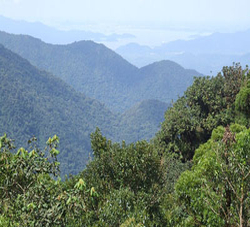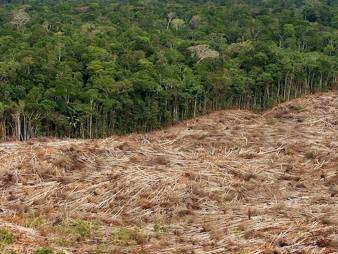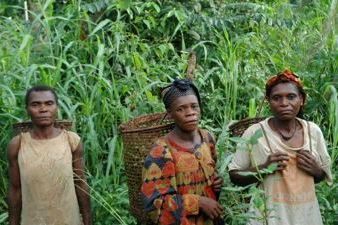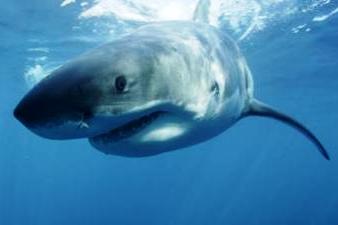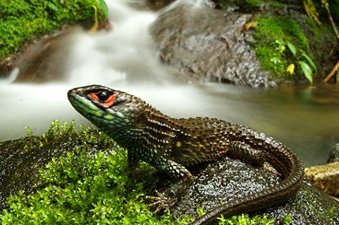
Berkeley – Peru’s treasured Manu National Park is the world’s top biodiversity hotspot for reptiles and amphibians, according to a new survey published by biologists from the University of California, Berkeley, Southern Illinois University in Carbondale (SIU-Carbondale) and Illinois Wesleyan University.
The park, which encompasses lowland Amazonian rainforest, high-altitude cloud forest and Andean grassland east of Cuzco, is well known for its huge variety of bird life, which attracts eco-tourists from around the globe. More than 1,000 species of birds, about 10 percent of the world’s bird species; more than 1,200 species of butterflies; and now 287 reptiles and amphibians have been recorded in the park.
“For reptiles and amphibians, Manu and its buffer zone now stands out as the most diverse protected area anywhere,” said study co-author Rudolf von May, a postdoctoral researcher in UC Berkeley’s Museum of Vertebrate Zoology.
Despite the park’s abundant and diverse animal life, von May said, not all is well in the preserve. The devastating chytrid fungus has caused a decline in the number of frogs there, as it has elsewhere around the world, while deforestation for subsistence living, gold mining and oil and gas drilling are encroaching on the buffer zones around the park.
“All of this is threatening the biodiversity in the park and the native peoples who live in settlements in the park,” von May said. At least four Amazonian tribes and a nomadic group of hunter-gatherers known as Mashco-Piro live within the confines of Manu National Park and its buffer zone.
Von May, a native of Peru, and co-author Alessandro Catenazzi, an assistant professor of zoology at SIU-Carbondale, have spent more than 15 years each scouring the park and its surrounding areas for frogs, toads, salamanders and caecilians – all amphibians – as well as for reptiles such as snakes, lizards, turtles and caimans. The field work in the park and its buffer zone, augmented by other, more limited surveys published previously, allowed the team to compile a list of 155 amphibian and 132 reptile species, including a handful of species new to science.
Taxonomist and co-author Edgar Lehr, assistant professor of biology at Illinois Wesleyan University, collaborates frequently with von May and Catenazzi on frog taxonomy and studies of amphibian declines and conservation.
Record-breaking Biodiversity
The researchers listed the 287 species of reptiles and amphibians in the most recent issue of the journal Biota Neotropica. The previous record for the most diverse protected area for reptiles and amphibians was in Yasuní National Park in Ecuador, which hosts 150 amphibian and 121 reptile species, according to a 2010 study.
”There is no place like Manu where we can preserve such an exceptionally large amount of biodiversity, as well as the evolutionary processes that contribute to maintain and promote biodiversity”, said Catenazzi, a former postdoctoral researcher in UC Berkeley’s Department of Integrative Biology. “It is our responsibility to make sure this biological legacy is passed on to the next generations.”
To assemble the list, the team surveyed multiple elevations and examined hundreds of museum specimens collected at dozens of locations in Manu National Park and its buffer zone. Analysis of DNA sequences and frog calls allowed the team to identify additional species.
World Heritage Site
While the high species diversity can be partially attributed to the large area and steep topographic variation within Manu National Park, the finding is noteworthy, von May said.
He and his colleagues estimate that the park represents only 0.01 percent of the planet’s land area, but houses 2.2 percent of all amphibians and 1.5 percent of all reptiles known worldwide.
Since its creation 41 years ago, Manu National Park has become recognized as globally irreplaceable: it was designated a UNESCO Biosphere Preserve in 1977 and a World Heritage Site in 1987. Herpetologists – experts in reptiles and amphibians – first surveyed the region in the 1970s, primarily along the road that connects the City of Cuzco to villages in the cloud forests of the Kosñipata Valley.
Starting in the ’80s, research was broadened to include remote lowland rainforest locations, such as Cocha Cashu Biological Station, inside the park. Subsequent expeditions have continued to reveal new species of amphibians and reptiles, especially in the cloud forest and high-Andean grasslands, which are rich in endemic species, Catenazzi said. One of the most recent discoveries was the glass frog Centrolene sabini, the world’s 7,000th known amphibian species.
The research team predicts that additional species will be described in the upcoming years as a result of increased use of DNA analysis, study of frog calls and other techniques.
The work was supported by the National Science Foundation (NSF), the National Geographic Society, the Amazon Conservation Association, the Rufford Small Grants Foundation and the Wildlife Conservation Society.
Check the following link to read/download the Full Survey Report – “The Amphibians and Reptiles of Manu National Park and its Buffer Zone, Amazon Basin and Eastern Slopes of the Andes, Peru”:
http://www.biotaneotropica.org.br/v13n4/en/fullpaper?bn02813042013+en
Source: By Robert Sanders, UC Berkeley.



